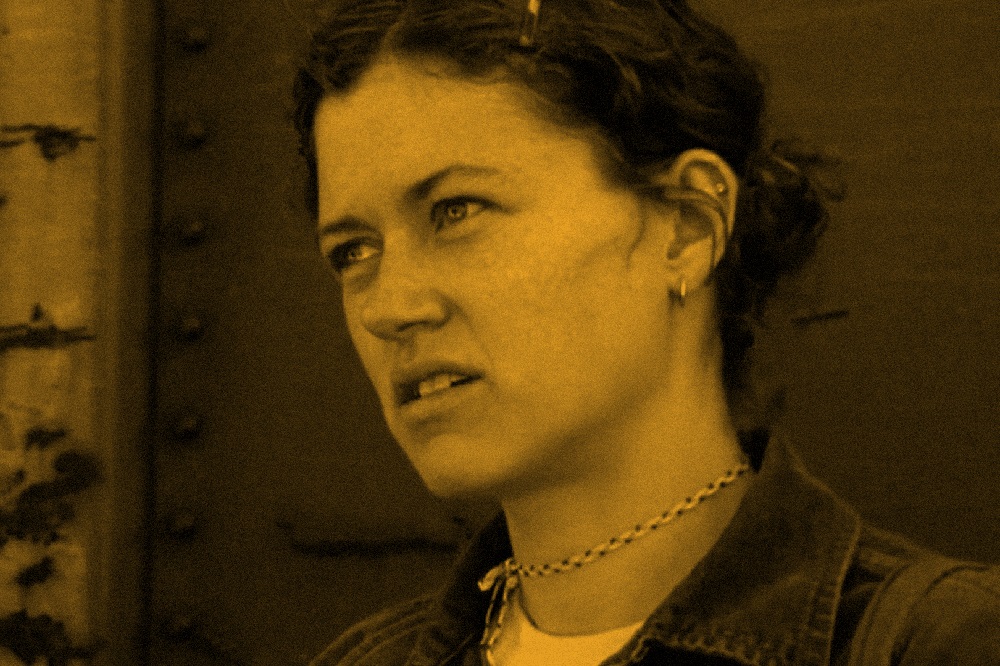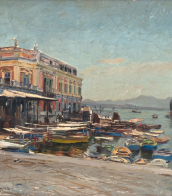margaret

Margaret Bourke-White was an American photographer and photojournalist. She studied photography at the Clarence H. White School of Photography. White, where she developed her trademark style using dramatic angles and strong contrasts of light and shadow.
Burke-White was one of the first women photographers to work for Life magazine, and her images became synonymous with the magazine's coverage of major world events such as World War II and the Korean War. She was also the first woman photographer to work in war zones during World War II, where she captured powerful images of warfare and its impact on civilians.
In addition to war photography, Bourke-White also documented the Great Depression in the United States and was one of the few photographers to gain access to the Soviet Union in the 1930s where she documented Soviet industrialization and the lives of ordinary people.
Bourke-White's work was known for its powerful impact and stark realism. She often risked her safety to get the perfect shot and her images continue to inspire photographers today. She published several books of her work, including 'Eyes on Russia' and 'Dear Fatherland, Rest in Peace'.
Bourke-White left behind a legacy as one of the greatest photojournalists of the 20th century.


Margaret Bourke-White was an American photographer and photojournalist. She studied photography at the Clarence H. White School of Photography. White, where she developed her trademark style using dramatic angles and strong contrasts of light and shadow.
Burke-White was one of the first women photographers to work for Life magazine, and her images became synonymous with the magazine's coverage of major world events such as World War II and the Korean War. She was also the first woman photographer to work in war zones during World War II, where she captured powerful images of warfare and its impact on civilians.
In addition to war photography, Bourke-White also documented the Great Depression in the United States and was one of the few photographers to gain access to the Soviet Union in the 1930s where she documented Soviet industrialization and the lives of ordinary people.
Bourke-White's work was known for its powerful impact and stark realism. She often risked her safety to get the perfect shot and her images continue to inspire photographers today. She published several books of her work, including 'Eyes on Russia' and 'Dear Fatherland, Rest in Peace'.
Bourke-White left behind a legacy as one of the greatest photojournalists of the 20th century.


Margaret Leisha Kilgallen was a San Francisco Bay Area artist who combined graffiti art, painting, and installation art. Though a contemporary artist, her work showed a strong influence from folk art. She was considered a central figure in the Bay Area Mission School art movement.


Margaret Bourke-White was an American photographer and photojournalist. She studied photography at the Clarence H. White School of Photography. White, where she developed her trademark style using dramatic angles and strong contrasts of light and shadow.
Burke-White was one of the first women photographers to work for Life magazine, and her images became synonymous with the magazine's coverage of major world events such as World War II and the Korean War. She was also the first woman photographer to work in war zones during World War II, where she captured powerful images of warfare and its impact on civilians.
In addition to war photography, Bourke-White also documented the Great Depression in the United States and was one of the few photographers to gain access to the Soviet Union in the 1930s where she documented Soviet industrialization and the lives of ordinary people.
Bourke-White's work was known for its powerful impact and stark realism. She often risked her safety to get the perfect shot and her images continue to inspire photographers today. She published several books of her work, including 'Eyes on Russia' and 'Dear Fatherland, Rest in Peace'.
Bourke-White left behind a legacy as one of the greatest photojournalists of the 20th century.


Margaret Bourke-White was an American photographer and photojournalist. She studied photography at the Clarence H. White School of Photography. White, where she developed her trademark style using dramatic angles and strong contrasts of light and shadow.
Burke-White was one of the first women photographers to work for Life magazine, and her images became synonymous with the magazine's coverage of major world events such as World War II and the Korean War. She was also the first woman photographer to work in war zones during World War II, where she captured powerful images of warfare and its impact on civilians.
In addition to war photography, Bourke-White also documented the Great Depression in the United States and was one of the few photographers to gain access to the Soviet Union in the 1930s where she documented Soviet industrialization and the lives of ordinary people.
Bourke-White's work was known for its powerful impact and stark realism. She often risked her safety to get the perfect shot and her images continue to inspire photographers today. She published several books of her work, including 'Eyes on Russia' and 'Dear Fatherland, Rest in Peace'.
Bourke-White left behind a legacy as one of the greatest photojournalists of the 20th century.


Margaret Bourke-White was an American photographer and photojournalist. She studied photography at the Clarence H. White School of Photography. White, where she developed her trademark style using dramatic angles and strong contrasts of light and shadow.
Burke-White was one of the first women photographers to work for Life magazine, and her images became synonymous with the magazine's coverage of major world events such as World War II and the Korean War. She was also the first woman photographer to work in war zones during World War II, where she captured powerful images of warfare and its impact on civilians.
In addition to war photography, Bourke-White also documented the Great Depression in the United States and was one of the few photographers to gain access to the Soviet Union in the 1930s where she documented Soviet industrialization and the lives of ordinary people.
Bourke-White's work was known for its powerful impact and stark realism. She often risked her safety to get the perfect shot and her images continue to inspire photographers today. She published several books of her work, including 'Eyes on Russia' and 'Dear Fatherland, Rest in Peace'.
Bourke-White left behind a legacy as one of the greatest photojournalists of the 20th century.


Margaret Bourke-White was an American photographer and photojournalist. She studied photography at the Clarence H. White School of Photography. White, where she developed her trademark style using dramatic angles and strong contrasts of light and shadow.
Burke-White was one of the first women photographers to work for Life magazine, and her images became synonymous with the magazine's coverage of major world events such as World War II and the Korean War. She was also the first woman photographer to work in war zones during World War II, where she captured powerful images of warfare and its impact on civilians.
In addition to war photography, Bourke-White also documented the Great Depression in the United States and was one of the few photographers to gain access to the Soviet Union in the 1930s where she documented Soviet industrialization and the lives of ordinary people.
Bourke-White's work was known for its powerful impact and stark realism. She often risked her safety to get the perfect shot and her images continue to inspire photographers today. She published several books of her work, including 'Eyes on Russia' and 'Dear Fatherland, Rest in Peace'.
Bourke-White left behind a legacy as one of the greatest photojournalists of the 20th century.


Margaret Leisha Kilgallen was a San Francisco Bay Area artist who combined graffiti art, painting, and installation art. Though a contemporary artist, her work showed a strong influence from folk art. She was considered a central figure in the Bay Area Mission School art movement.


Margaretha Roosenboom was a 19th-century Dutch floral artist. She studied painting under her father, Nicolaas Johannes Roosenboom.
Margaretha Roosenboom mainly painted still lifes, both with flowers and fruit. In particular, roses were the central theme of her works.


Margarete Zahn is a German painter and graphic artist.
She studied painting at the State Academy of Fine Arts Städelschule in Frankfurt am Main. She participates in exhibitions.


Margarete Zahn is a German painter and graphic artist.
She studied painting at the State Academy of Fine Arts Städelschule in Frankfurt am Main. She participates in exhibitions.


Margarete Zahn is a German painter and graphic artist.
She studied painting at the State Academy of Fine Arts Städelschule in Frankfurt am Main. She participates in exhibitions.


Margarete Zahn is a German painter and graphic artist.
She studied painting at the State Academy of Fine Arts Städelschule in Frankfurt am Main. She participates in exhibitions.


Maria Margaretha La Fargue, an artist from the northern Netherlands, is best known for her cityscapes, genre paintings, and prints. She also worked on illustrations for books.


Margaretha Roosenboom was a 19th-century Dutch floral artist. She studied painting under her father, Nicolaas Johannes Roosenboom.
Margaretha Roosenboom mainly painted still lifes, both with flowers and fruit. In particular, roses were the central theme of her works.


Margaretha Roosenboom was a 19th-century Dutch floral artist. She studied painting under her father, Nicolaas Johannes Roosenboom.
Margaretha Roosenboom mainly painted still lifes, both with flowers and fruit. In particular, roses were the central theme of her works.









































































